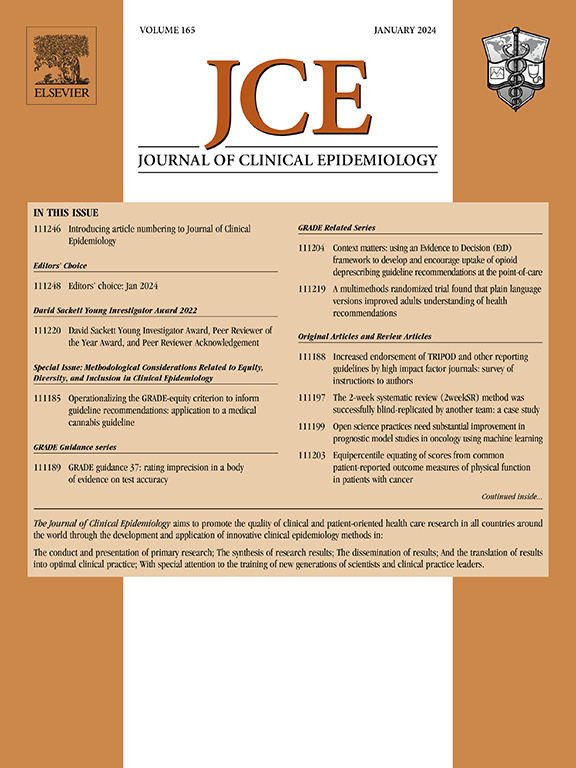Pain and physical function are common core domains across 40 core outcome sets of musculoskeletal conditions: a systematic review
IF 7.3
2区 医学
Q1 HEALTH CARE SCIENCES & SERVICES
引用次数: 0
Abstract
Objectives
To determine common domains across existing musculoskeletal core outcome sets (COSs). Secondary aims were to assess the development quality of existing musculoskeletal COSs and whether development quality and patient participation was associated with domain selection.
Study Design and Setting
A systematic review of musculoskeletal COSs. We searched six databases from inception until December 2023. Studies were included if they reported on the development of a COS in adults with musculoskeletal conditions for any type of intervention. Quality was assessed using the Core Outcome Set-Standards for Development recommendations (COS-STAD). Data extracted included scope of the COS, health condition, interventions, and outcome domains. We defined a common core domain when present in >66% of all COSs. Analyses were performed using descriptive statistics.
Results
We included 51 studies reporting on 40 COSs, 25 were developed for research settings only, five for clinical settings only, and 10 for both. We identified 310 domains consisting of 255 mandatory or compulsory or not specified, 45 important, and 10 for further research. Pain (90%) and physical function (88%) were common core domains. COS development quality varied (range: 4–11 recommendations met); six COS met all standards. Domain definitions were provided in 13 COSs, 27 included patients or representatives in their development process, while nine met all recommendations for the consensus process. COSs involving patients were of higher quality (median: nine vs five for those not involving patients).
Conclusion
Pain and physical function core domains should be considered for inclusion in all new musculoskeletal COSs. Developers should follow COS development recommendations and include patients or their representatives.
疼痛和身体功能是 40 个肌肉骨骼疾病核心结果组的共同核心领域:系统综述。
本文章由计算机程序翻译,如有差异,请以英文原文为准。
求助全文
约1分钟内获得全文
求助全文
来源期刊

Journal of Clinical Epidemiology
医学-公共卫生、环境卫生与职业卫生
CiteScore
12.00
自引率
6.90%
发文量
320
审稿时长
44 days
期刊介绍:
The Journal of Clinical Epidemiology strives to enhance the quality of clinical and patient-oriented healthcare research by advancing and applying innovative methods in conducting, presenting, synthesizing, disseminating, and translating research results into optimal clinical practice. Special emphasis is placed on training new generations of scientists and clinical practice leaders.
 求助内容:
求助内容: 应助结果提醒方式:
应助结果提醒方式:


